Joshua Farnsworth recently filmed a video of me building a Continuous Arm Rocker. It should be published by Popular Woodworking in the next month or so. Today I started cleaning up the chair in preparation for painting and plenty of minor things needed fixing. I thought it might make a useful photo essay on finishing. Here’s the first installment:
The concave side of the arm tends to get bumpy due to compression during bending. The only way I know to completely fix this is to rasp at a diagonal to the bumps, then scrape, then sand.
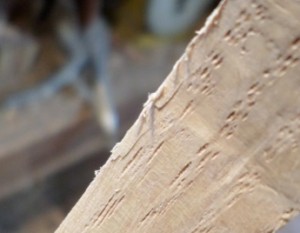 Somehow, one side of the arm had some torn fibers.
Somehow, one side of the arm had some torn fibers.
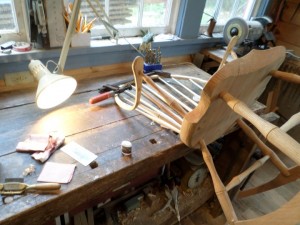 Thin CA (super) glue will fix this, but the surface you are gluing needs to be horizontal or the watery glue will run everyplace but into the crack.
Thin CA (super) glue will fix this, but the surface you are gluing needs to be horizontal or the watery glue will run everyplace but into the crack.
 Let it dry for a minute, scrape it flush, and it’ll look like this. I probably should scrape away some more of the glue so I don’t see a change in surface texture through the paint.
Let it dry for a minute, scrape it flush, and it’ll look like this. I probably should scrape away some more of the glue so I don’t see a change in surface texture through the paint.
 Here some fibers tore loose from the arm-stump mortise during reaming.
Here some fibers tore loose from the arm-stump mortise during reaming.
 Putty fills these nicely —apply it with a screwdriver. If the putty is really thick (almost flaky), it won’t shrink much as it dries. You can cut or paint it immediately after applying it.
Putty fills these nicely —apply it with a screwdriver. If the putty is really thick (almost flaky), it won’t shrink much as it dries. You can cut or paint it immediately after applying it.
 Trim the putty with a chisel (sandpaper tends to hollow out the putty leaving a slightly concave spot).
Trim the putty with a chisel (sandpaper tends to hollow out the putty leaving a slightly concave spot).
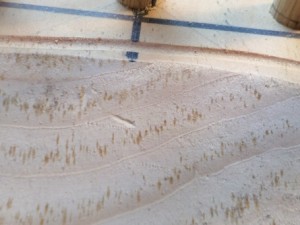 A small dent in the seat. Steam this out. If you scrape or sand, you will end up with a raised spot when the wet paint raises the dent. For the same reason, any dents you get during the final scraping process should be raised with steam before continuing scraping.
A small dent in the seat. Steam this out. If you scrape or sand, you will end up with a raised spot when the wet paint raises the dent. For the same reason, any dents you get during the final scraping process should be raised with steam before continuing scraping.
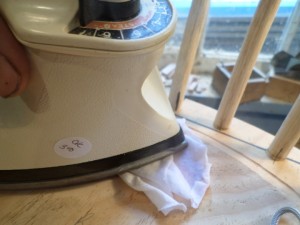 A wet rag and my new thrift-store iron. Re-wet the rag if necessary: the more steam the better.
A wet rag and my new thrift-store iron. Re-wet the rag if necessary: the more steam the better.
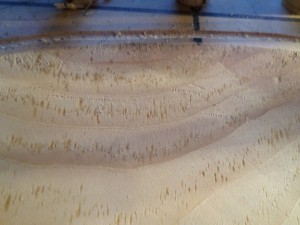 Almost entirely gone after less than a minute of steaming.
Almost entirely gone after less than a minute of steaming.
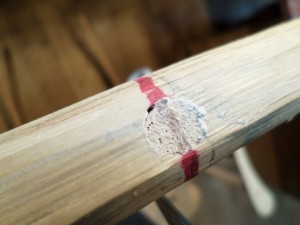 Small gaps like this one around a spindle hole can be filled with putty. Putty tends to show on bigger gaps, so use medium (or thick) CA glue, or make a wooden wedge and drive it in.
Small gaps like this one around a spindle hole can be filled with putty. Putty tends to show on bigger gaps, so use medium (or thick) CA glue, or make a wooden wedge and drive it in.

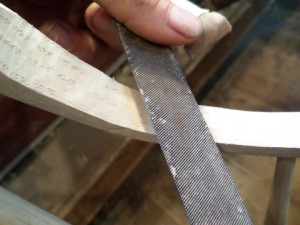
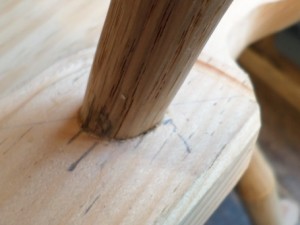
0 Comments